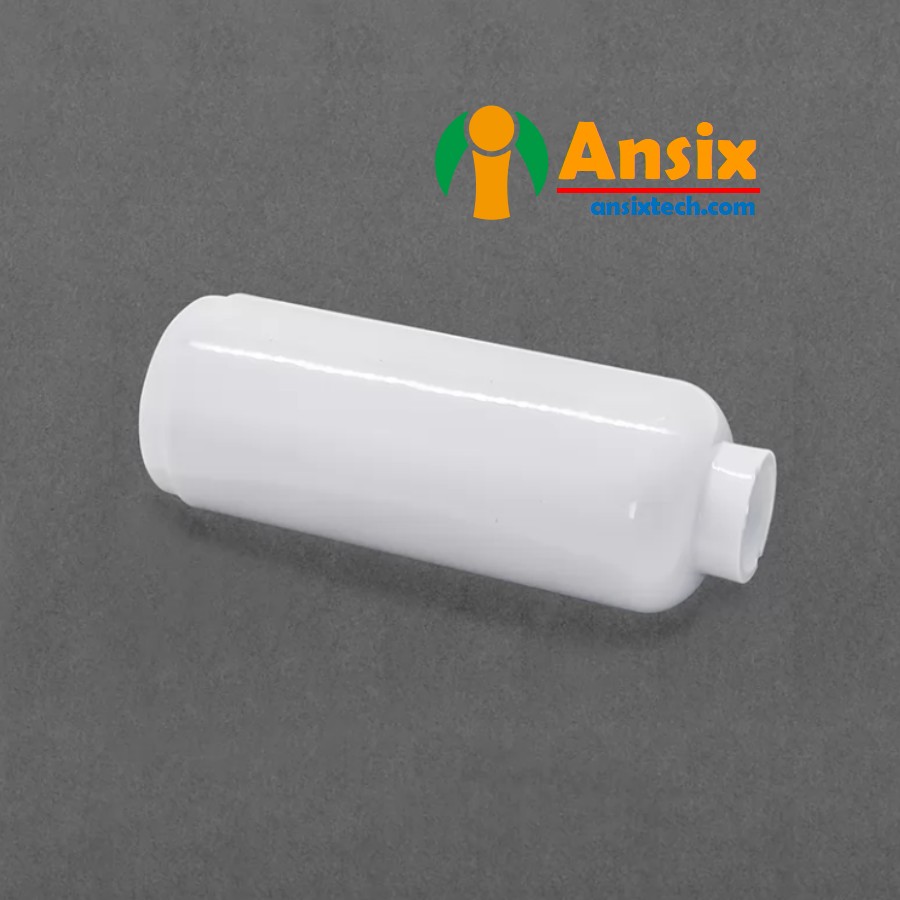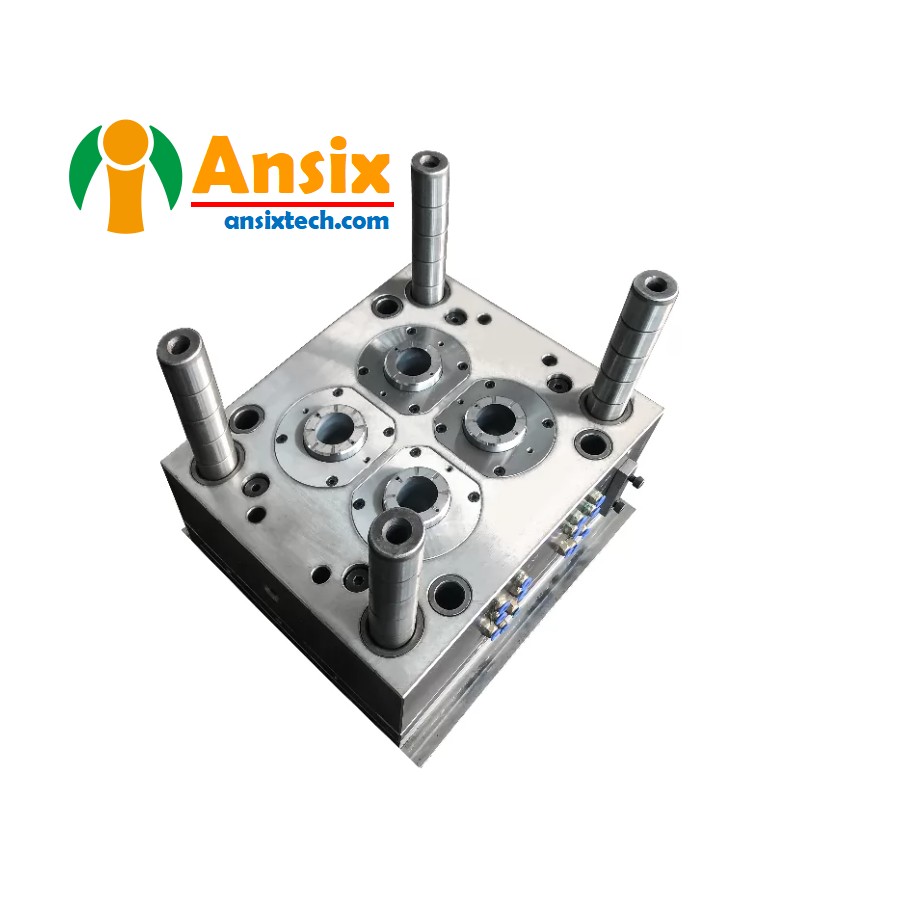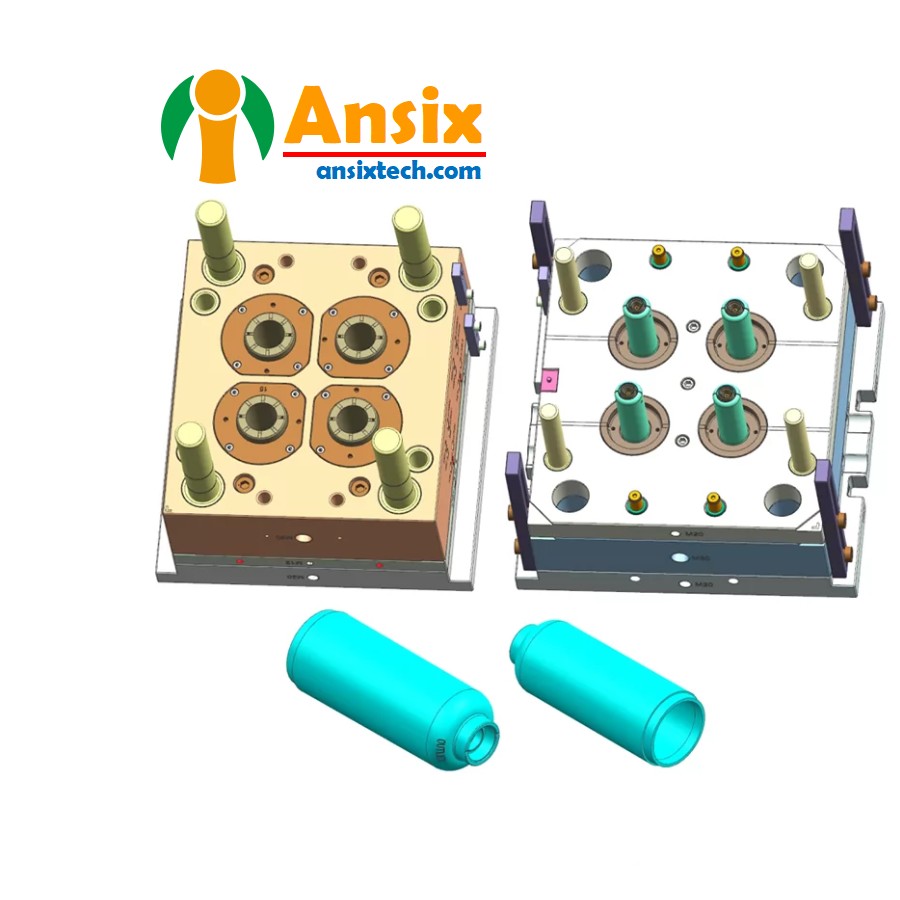Water Purifier Shell Cover Plastic Injection Mold Filter element PP sleeve cover
FEATURES
-
Mold Description
Product Materials:
PP
Mold Material:
738
Number of Cavities:
1*4
Glue Feeding Method:
Hot runner
Cooling Method:
Water cooling
Molding Cycle
33.5s
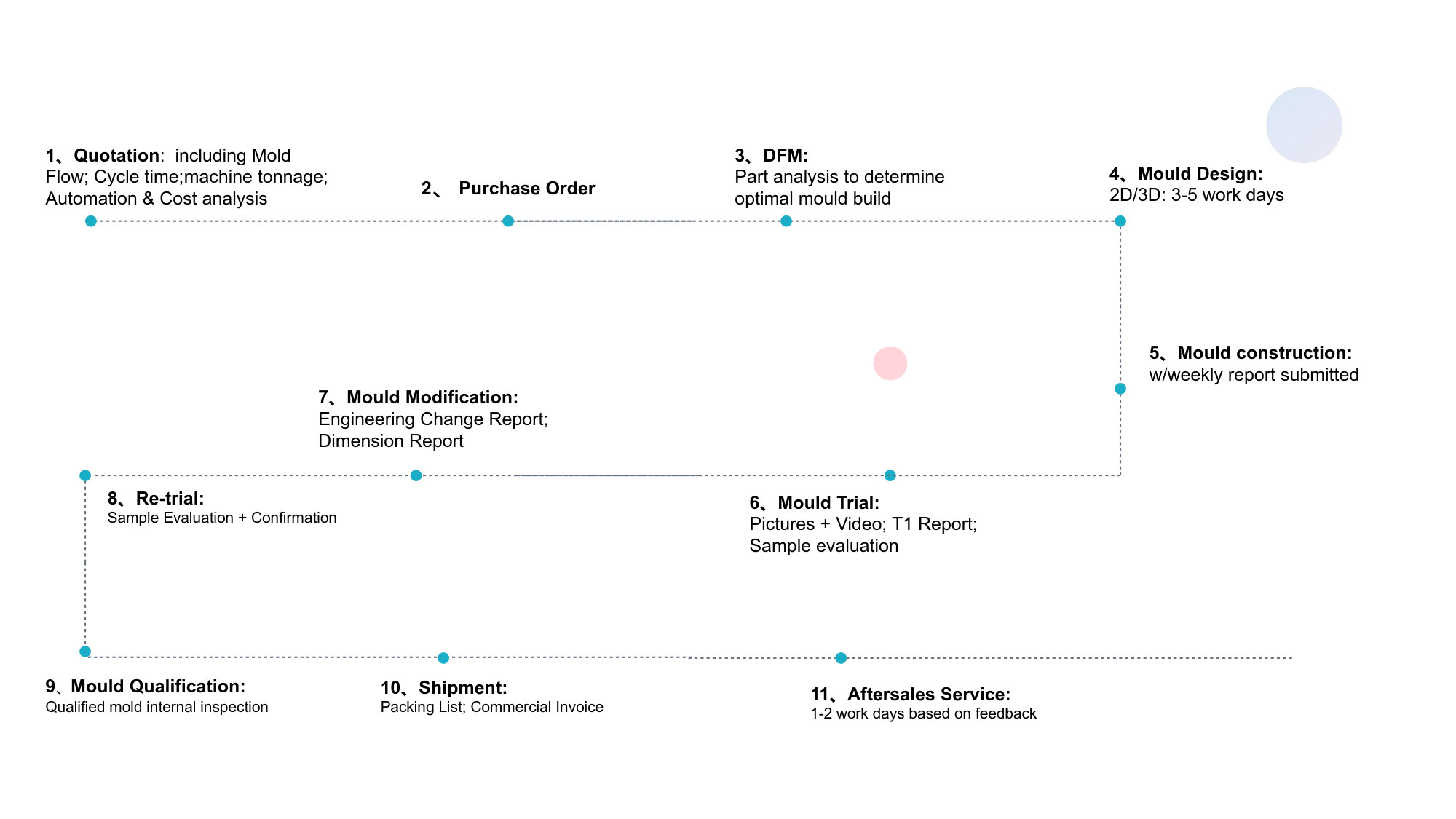
- Water Purifier Shell Cover Filter element PP sleeve cover Mold flow analysis and mold designThe mold flow analysis and mold design of the water purifier filter element casing mold are very important links in the manufacturing process of the water purifier filter element casing. The following will introduce the mold flow analysis and mold design of the water purifier filter element casing mold.When designing a water purifier filter element casing mold, the following aspects need to be considered:1. Mold structure design: According to the shape and size of the water purifier filter core casing, design the structure of the mold, including the upper mold, lower mold, mold core, mold cavity and other parts of the mold. Considering that four products can be produced by injection molding at one time, the arrangement of the molds needs to be reasonably designed to ensure the molding quality of each product.2. Cooling system design: Design a reasonable cooling system to ensure that plastic materials can be quickly cooled and solidified to improve production efficiency. For molds that mold multiple products at one time, the design of the cooling system is particularly important to ensure that each product can be cooled evenly.3. Injection system design: A properly designed injection system ensures that the plastic material can evenly fill the mold cavity and avoids defects such as bubbles and short injections. For molds that inject multiple products at one time, special attention needs to be paid to the design of the injection system to ensure that each product can receive sufficient injection molding material.4. Mold material selection: Select appropriate mold materials, usually high-quality tool steel or carbide, to ensure the service life and stability of the mold.5. Mold processing accuracy: Mold processing needs to ensure high precision to ensure the dimensional accuracy and consistency of the product. For molds that mold multiple products at one time, processing accuracy is particularly important, and it is necessary to ensure that the dimensional accuracy of each product is consistent.6. Mold debugging: After the mold processing is completed, the mold needs to be assembled and debugged to ensure that the mold can stably and efficiently produce products that meet the requirements.Considering the above factors, when designing the water purifier filter core casing mold, it is necessary to pay attention to mold structure design, cooling system design, injection system design, mold material selection, mold processing accuracy and mold debugging to ensure that the mold can be stable and efficient. Produce products that meet the requirements.Mold flow analysis of water purifier filter element casing mold:a. Use mold flow analysis software to import the CAE/CAD/CAM model of the filter sleeve and set the injection molding process parameters, such as injection speed, temperature, pressure, etc.b. Conduct mold flow analysis to simulate the melt flow, filling, cooling and other processes during the injection molding process to evaluate the filling performance, bubbles, short shots and other defects of the filter element casing, and optimize the injection molding process parameters.During the mold flow analysis process, you need to pay attention to the following points:Design of demoulding system: According to the shape and requirements of the filter element casing, design an appropriate demoulding system to ensure that the filter element casing can be demoulded smoothly and avoid damage and deformation.Mold design of water purifier filter element casing mold:b. Ensure that the accuracy and size of the mold meet the requirements to ensure the quality and stability of the filter element casing.Surface treatment of the mold: According to the requirements of the filter element casing, perform appropriate surface treatment, such as grinding, polishing, etc., to improve the surface quality and smoothness of the filter element casing.In summary, the mold flow analysis and mold design of the water purifier filter element casing mold require mold flow analysis, optimization of injection molding process parameters, and mold design. Through reasonable design and control, high-quality water purifier filter cartridge casings can be obtained.

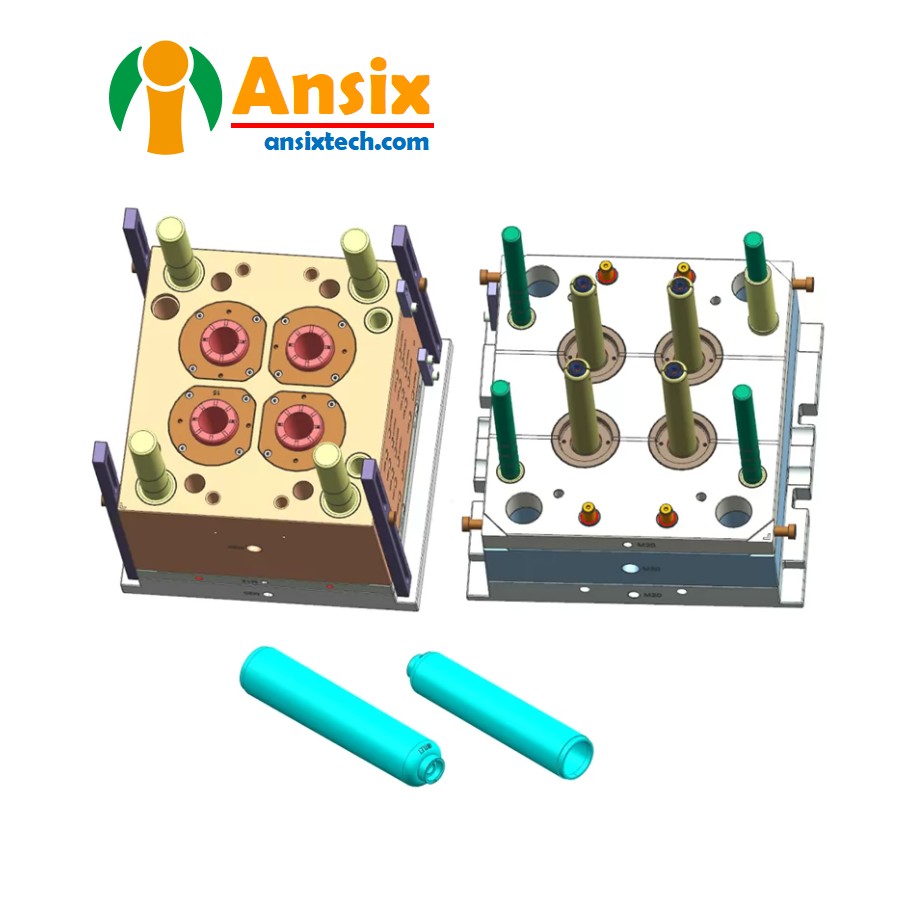
- Water Purifier Shell Cover Filter element PP sleeve cover of the mold manufacturing process and product material selectionThe processing process of water purifier filter element PP casing mold generally includes the following steps:1. Mold design: First, carry out the mold design of the PP casing of the water purifier filter element, including product structure design, mold structure design, injection molding system design, etc. Designers need to design a reasonable mold structure based on the shape, size and functional requirements of the product.2. Material preparation: Selecting the appropriate mold material is crucial to the quality and life of the mold. Common mold materials include tool steel, carbide, etc. The selection of materials should take into account factors such as the use environment of the mold, processing technology and cost.3. Mold processing: Mold processing usually includes CNC machining, EDM, wire cutting and other processes. CNC machining is one of the main methods of mold processing, which can achieve high-precision and high-efficiency processing. EDM and wire cutting are suitable for processing high-hardness, high-precision mold parts.4. Mold assembly and debugging: After the mold processing is completed, the mold needs to be assembled and debugged. This includes assembly of mold parts, debugging and testing of molds, etc.5. Raw material pretreatment: The selected plastic raw material is pretreated, usually the granular plastic raw material is heated and melted to facilitate injection molding.6. Injection molding: Inject the preheated plastic raw material into the mold cavity through the screw of the injection molding machine. Under certain pressure and temperature conditions, the plastic raw material fills the mold cavity and forms the shape of the product.7. Cooling and solidification: Cooling in the mold for a period of time allows the plastic raw materials to solidify and form.8. Take out the product: Open the mold and take out the formed water purifier filter element PP casing product.9. Trimming and post-processing: Trim the product, remove excess material, remove flash and other post-processing processes.10. Quality inspection: Conduct quality inspection on the formed products. This includes dimensional measurement, visual inspection, functional testing, etc. to ensure that the product meets customer requirements and standards.11. Packaging and shipping: Products that pass quality inspection are packaged and prepared for shipment.For the material selection of the PP casing of the water purifier filter element, the following factors usually need to be considered:1. Corrosion resistance: The water purifier filter element casing needs to have certain corrosion resistance to ensure that the product will not be corroded when it comes into contact with water.2. High temperature resistance: The water purifier filter element casing needs to have certain high temperature resistance to ensure stability in high temperature environments.3. Injection molding processing performance: The material needs to have good injection molding processing performance to ensure the molding quality and production efficiency of the product.Commonly used materials for PP casings of water purifier filter elements include:1. Polypropylene (PP): PP material has good corrosion resistance and high temperature resistance, and is suitable for the manufacture of filter core casings for water purifiers.2. Polyethylene (PE): PE material has good corrosion resistance and high temperature resistance, and is suitable for making water purifier filter core casings.When selecting materials, comprehensive considerations need to be based on the specific requirements of the product and the use environment.Depending on specific application requirements, other materials such as ABS, PC, etc. can also be considered.The manufacturing and processing of water purifier filter element casing molds and the selection and application of casing materials require the selection of appropriate processing techniques and equipment, and the selection of materials with good chemical resistance, high temperature resistance and mechanical properties. Through reasonable processing and control of injection molding process parameters, high-quality water purifier filter element casings can be achieved.
- Filter element PP sleeve cover Mass production and Quality control for Water Purifier ShellThe injection molding mass production of water purifier filter cartridge sleeves involves the following aspects:Optimization of injection molding process parameters: By optimizing injection molding process parameters, such as injection speed, temperature, pressure, etc., to improve filling performance and reduce production cycle. Determine the appropriate injection molding process parameters based on the characteristics of the casing material and product requirements.Mold design and manufacturing: According to the design requirements of the filter element casing, the mold is designed and manufactured. Ensure that the accuracy and size of the mold meet the requirements to ensure the quality and stability of injection molding.Automated production equipment: Use automated injection molding machines and robot systems to achieve automated production, reduce manual operations and improve production efficiency. Automated equipment can increase production speed and consistency and reduce the occurrence of human error.Multi-cavity mold and multi-machine production: Multi-cavity mold and multi-machine production are used to produce simultaneously to increase output and production efficiency. Multi-cavity molds can inject multiple casings at one time to improve production efficiency.Quality control and inspection: Establish a complete quality control system, including quality inspection, process control and defective product handling, to ensure that products meet quality standards. Conduct inspections and tests on product appearance quality, dimensional accuracy, physical properties, etc. to ensure product quality and consistency.Cost control: Reasonably select injection molding materials and mold materials to reduce material costs and mold manufacturing costs. Optimize the production process, reduce the scrap rate and energy consumption, and reduce production costs.Continuous improvement: Continuously improve the production process and technology, optimize injection molding process parameters and mold design to improve product quality and production efficiency. Carry out fault analysis and problem solving, handle abnormal situations in production in a timely manner, and avoid the production of defective products.Through reasonable injection molding process parameter optimization, mold design and manufacturing, application of automated production equipment, and quality control and cost control measures, injection molding mass production of water purifier filter element casings can be achieved. This increases production efficiency, reduces costs, and ensures product quality and consistency.


